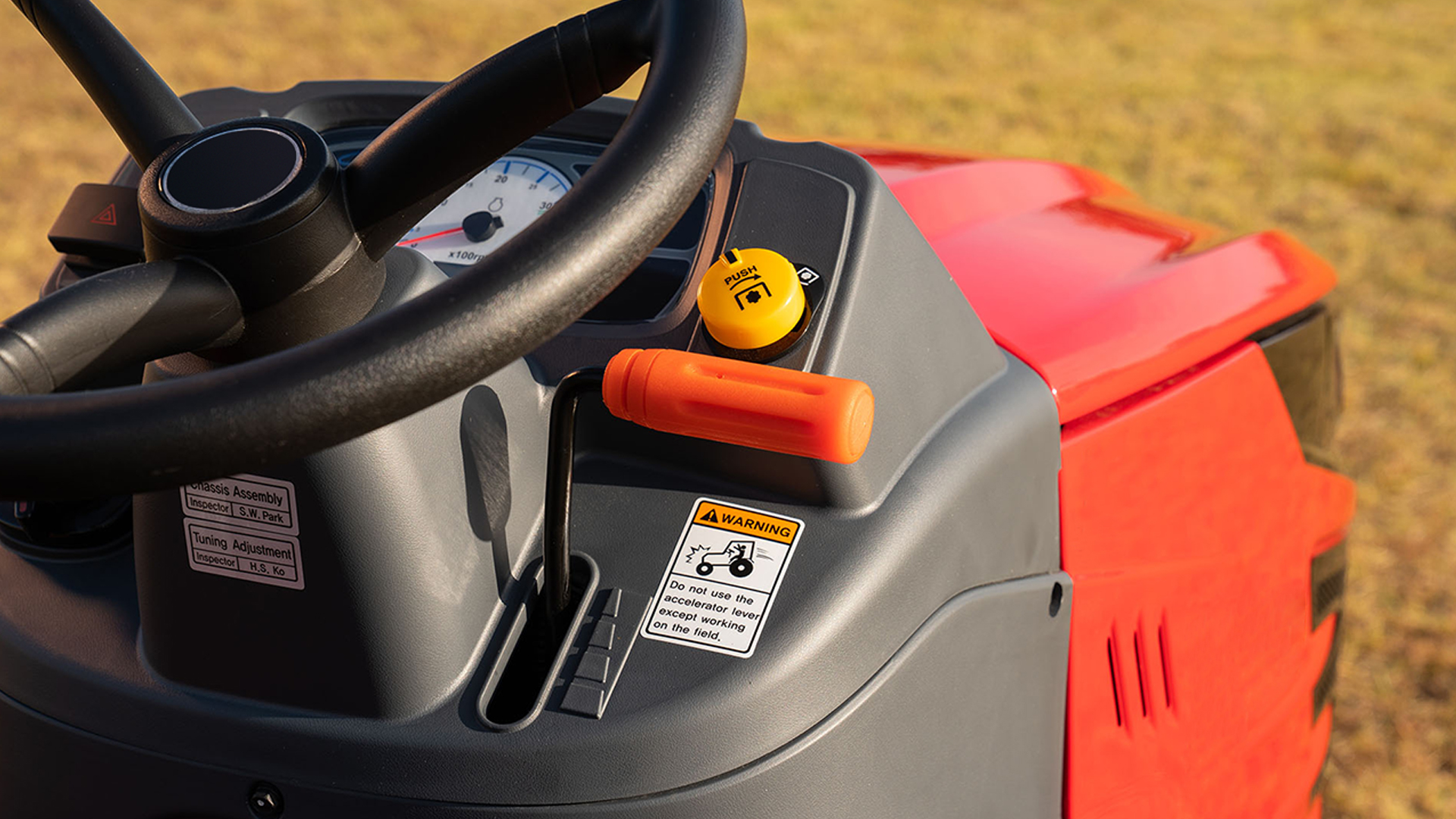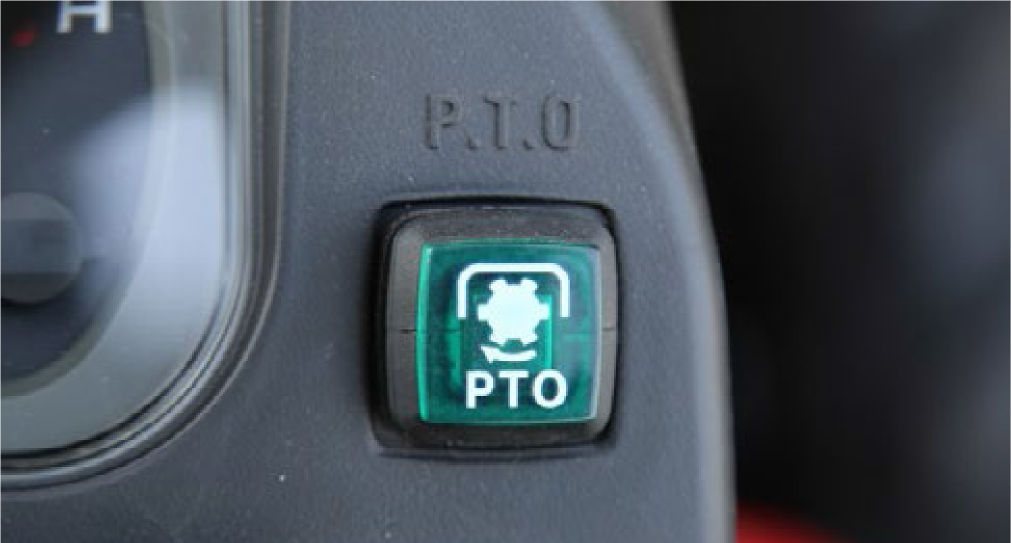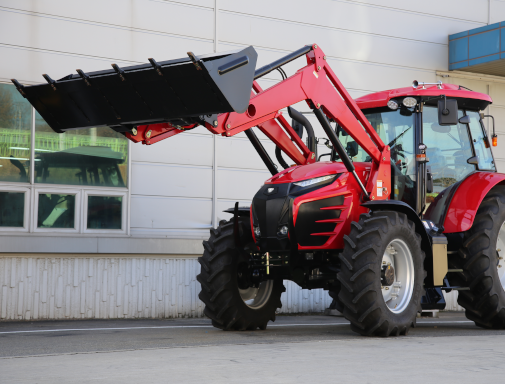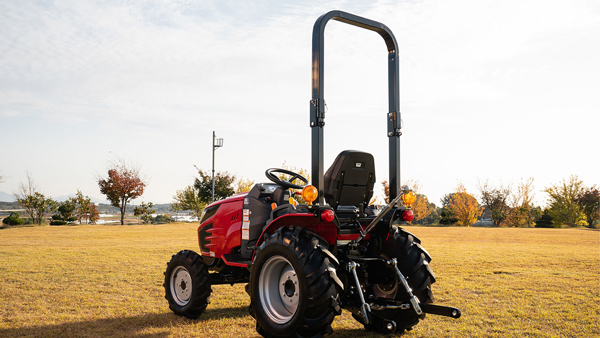Tractor terminology
Checklist
December 1, 2021Buying a tractor for first-time owners might be overwhelming with all the terms and technical jargon associated with it. For the uninitiated, words like a three-point hitch or power take-off might sound like alien language at first.
Before visiting your first tractor dealership, get up to speed and decode some of the complicated language behind tractors with this easy definition of tractor terms.

- Attachments
A tractor is more practical with attachments installed on it. These attachments could be any additional or supplementary device, like a front-end loader or a backhoe. - Engine displacement
Internal combustion engines pump air through cylinders to make it work. Engine displacement refers to the volume of air displaced across all cylinders to burn more fuel and produce more power. However, a more significant engine displacement does not mean higher engine performance. Modifications, like aspiration and turbocharging, could help improve an engine’s overall performance. - Engine types
- Turbocharger: A turbocharger is basically a small turbine that pushes more air into the combustion chamber, boosting the engine. This type of engine has better fuel efficiency and gives extra power to tractor engines.
- Naturally aspirated: A naturally aspirated engine does not use any special device to push additional power to itself. Instead, it draws air from the outside environment and pushes it onto the combustion chamber through an intake manifold.
- Engine control units (ECU)
The engine control unit is responsible for controlling all engine requirements, including accelerator pedal position, fuel injection, and ignition. - Fixed mounts
Some attachments are manufactured specifically for a model tractor. For example, fixed mounts may include front-end loaders, mowers, or backhoes compatible only with tractors of the same manufacturer and only for specific models. - Fuel injection system
- Common rail direct injection (CRDI): A fuel injection system describes how fuel is introduced into the engine. Modern engines use Common Rail Direct Injection (CRDI) system on their engines, allowing for more precise control of fuel following the load and speed of the engine. However, a CRDI requires an engine control module (ECM) to manage sensors and electronic injectors. If any of these systems fail, the engine will stall or stop completely.
- Mechanical diesel engine: Unlike a CRDI, a mechanical diesel engine does not require an electronic system to run. Instead, it has one high-pressure fuel injection pump that compresses the fuel and sends it into each cylinder. A diesel particulate filter (DPF) is usually installed to control emissions but remains an autonomous device separate from the mechanical diesel engine.
- Hydraulic system
- Implement flow: The implement flow measures how many gallons per minute can be driven to your implements, allowing them to function as they are designed to.
- Hitch lift capacity: The hitch lift capacity is the maximum weight a tractor can lift at the end of its lower arm.
- Hitch lift capacity at 24-inches: The lift capacity at 24-inches behind the end of its lift arms is different from its lift capacity at the end of its lower arm. There is about a 50% difference in how much a tractor could lift from the end of its lower arm to 24” behind it. The farther the weight is from the tractor, the less lifting capacity it has.
- Lift control type: There are two types of lift control a tractor has: draft type and position type. Most compact tractors have a position control type, which means the operator manually sets the hitch height and adjusts accordingly with the control lever. A draft control can adjust the hitch height automatically as the load changes.
- Horsepower
A horsepower is a measure of engine strength. When it comes to power take-off or drawbar horsepowers, it could also mean the power a tractor could drive towards operating or pulling attachments. - Hydrostatic transmission
Hydrostatic transmission helps tractors to convert mechanical energy into power then back to mechanical energy. This allows the tractor to change the variation of forward and reverse speeds. - Implements
Not to be confused with attachments, implements are devices installed on tractors that have specified uses. This could be a plow, rotary tiller, disc, or any device specialized for a task.


- Power take-off (PTO)
A PTO allows the tractor to transmit energy to attachments that do not have their energy or motor. Meanwhile, PTO power is the measure of energy your tractor engine can drive into the attachments. - Powertrain control module (PCM)
A powertrain control module combines an engine control unit (ECU) and transmission control unit (TCU), programmed to manage both engine and transmission in one control unit. The PCM also contains traction control and anti-lock brake systems, which prevent tractor brakes from locking and ensure the wheel maintains contact with the ground. - PTO type
There are two types of PTO: a live and an independent PTO. A live PTO is dependent on the tractor, such that if a tractor is moving, a live PTO is also live. If a tractor stops, a live PTO will also stop. Meanwhile, an independent PTO can turn even when an operator stops the tractor. - Rated engine speed
The rated engine speed is the measurement of the engine speed at rating. The governor is usually set, so the engine does not exceed the rated speed. Most engines can handle much more than the rated speed but keeping the use below the rated engine speed is better for long-term care and use. - Rollover protective structure (ROPS)
A rollover protective structure (ROPS) is installed in the cab of a tractor that creates a protective area around the operator if the tractor overturns. Modern tractors are required to have a steel bar or a cabin for safety purposes.


- Selective catalytic reduction (SCR)
Selective catalytic reduction (SCR) is when the diesel exhaust fluid breaks down nitrogen oxides in the exhaust of a diesel engine to reduce pollution. - Transmission type
There are several types of transmission for tractors. Depending on your intended application, each option has its set of advantages to consider.- Hydrostatic transmission tractor (HST): HST is easy to operate with a simplified high-to-low lever to shift and no clutch to depress. It boasts an infinitely variable speed that could adjust the forward speed from 0 to maximum using a single control lever. In addition, it applies torque smoothly and efficiently, making it ideal for front-end loader work.
- Manual transmission tractor: Manual transmission has a higher PTO output relative to engine horsepower, making it ideal for heavy-duty hauling applications. It could also handle applications that require steady speed, like tilling.
- Intelligent transmission tractor: The latest manual transmissions allow drivers to change gears and direction without using the clutch. Instead, the operator can now control the gear change through a single button on the gear stick and a forward-reverse from a shuttle lever.
- Synchro shuttle transmission: A synchro shuttle transmission is similar to a manual transmission, except it has a separate lever for going forwards or backward without losing momentum. This type of transmission is ideal for loader work or towing an implement.
- Powershift transmission: A powershift transmission allows operators to select gears without using the clutch, enabling rapid gear changes and getting the tractor to speed faster. Like a synchro shuttle transmission, a powershift transmission also has a shuttle lever for forward and reverse.
- Third function valve
A third function valve controls fluid flow in and out of cylinders and hydraulic motors to move implements such as grapples, augers, and snow blowers. Third function valves are called as such because it is used to control a third hydraulic cylinder. The first two cylinders are designated for the front-end loader. - Three-point hitch
Three-point hitch categories tell you the size of attachments you can use with your tractor. As the category number increases, the attachments get bigger and heavier.- Category 0: Category 0 hitches are considered light-duty and can support implements that are up to 20” wide. Tillers, plows, cultivators, and back blades are the usual implements compatible with Category 0 hitches.
- Category 1: Category 1 hitches are standard for quick hookups found in sub-compact and compact tractors. Another subset of Category 1 hitches is called Limited Category 1, which only means that not all implements made for Category 1 hitches can be lifted as high as suitable.
- Category 2: Category 2 hitches are common for tractors with bigger horsepower, usually from 40 hp to 125 hp. The top link pin diameter is 1 inch bigger, and the lift arm pins are bigger by 1 1/8 inches than Category 1 hitches.
- Category 3: Category 3 hitches have bigger dimensions than Category 2 to support the additional strength needed by heavy-duty implements. This category of hitch is powered by tractors in the 80 to 225 hp range.
- Category 4: The biggest category of hitches, Category 4, can handle most of the tasks a modern tractor can support. This category of hitches is compatible with tractors with a range of horsepower from 180 to 400 hp.
This glossary of tractor-related terms is just a portion of the technical vocabulary you will build as you keep on working on your tractor and with your dealer. Now that you know these words, you can better understand tractors and what to look for.
Your local TYM dealers have a wealth of information and expertise to share and guide you on your tractor purchase. Get in touch by finding a dealer.